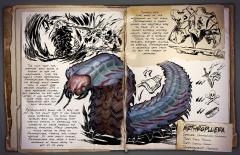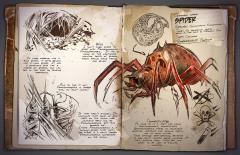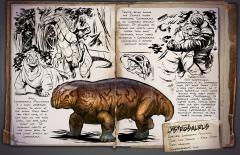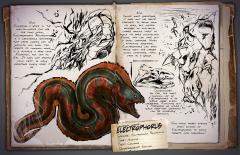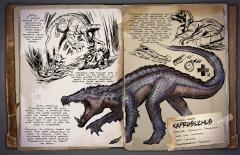Search the Community
Showing results for tags 'tameable'.
-
This creature would be an aggressive bipedal carnivore, capable of high speeds and good stealth, some abilities would include invisibility, a sniffing ability, and tree climbing. Taming would be a difficult feat due to having to find it and not get killed, this creature would be a little smaller than the allosaurus in size, but stronger bite and better stealth, making it a viable apex predator. Log Entry (Wild) I found this creature while I was wandering through the redwoods, the Chilantaisaurus, it seemed rather curious as it attempted to sneak up on me, it had small penetrating spikes from its spine and claws that seemed like they could rip metal with ease, I didn't wait to find out what would happen next. Log Entry (Tamed) After taming this creature, I found it much easier to travel as it can fit through small gaps, climb, and travel quickly, along with the speed of travel, I found it easier to find prey as it has a seemingly strong sense of smell. Saddle The saddle would require the following materials, 250 hide, 20 metal, 300 fiber, and 50 Chilantaisaurus scales (Gathered by finding scales one has shed, tamed or wild.) This saddle would hold two people, but a special armor made from the scales of this creature is required to go invisible along with your mount. Added crafting recipes Along with the armor previously mentioned, you can use 10 scales to modify a forcefield so it cloaks your base as well, and the armor does work without the tame, but only temporarily. (Special armor, dyeable)
-
- carnivorous
- rideable
-
(and 3 more)
Tagged with:
-
So, with the Creature Vote for Aberration ending, it got me thinking about all the creatures on that map again and why the Seeker was never made tameable & I guess breedable too for that matter. How would everyone feel if Wildcard were to make the Seeker tameable for ASA & would you want it too also be breedable? Personally, I think they should be both tameable & breedable. If tameable I could maybe see them like being able to help out your tamed Reapers or something or maybe even being like the Sinomacrops giving you a glide or little bit of flight or something. You could even go another crazier route & maybe make there be a way to get even bigger Seekers that are rideable too for like other maps where flyers are a thing. So, what does everyone think should Wildcard maybe show some love to this kind of forgotten creature? While on the topic of Aberration & ASA should the Basilisk and Karkinos also be made breedable as well?
- 2 replies
-
- asa
- aberrarion
- (and 4 more)
-

Chunkingosaurus (sorry theirs no pictures)
Hippo885147 posted a suggestion in Creature submission archive
Chunkingosaurus was a small stegosaurid originating in China. In game chunkingosaurus will be found in the forests on extinction attacking those who get to close to it with its powerful tail. Whatever gets close to it will feel the might of chunkingosaurus dealing massive amounts of damage, chunkingosaurus will have higher attack than kentrosaurus but lower health than it, it is rideable, its saddle unlocks at level 42, it has 2 attacks, its first is a bite, and its second is a tail whip that deals massive damage, while the bite is weaker. In order to tame it, it is a passive tame, who eats either rare mushroom, rare flower or azulberry. You approach, crouching slowly to its face than you feed it , if not, the chunkingosaurus will agro on you, once tamed its can gather berries, wood and thatch. When low health in battle chunkingosaurus will start to spin at high velocity running away and dealing 12 times the damage, after getting a kill the chunkingosaurus will dance. Once tamed chunkingosaurus will eat any kind of berry. He also has a high weight capacity. Chunkingosaurus will get a 800 second attack boost after killing a therapod. Also the saddle can also carry water. After you kill a chunkingosaurus you will get keratin, chintin, raw meat, and raw prime meat. Chunkingosaurus also has a ability called drought protection which allows chunkingosaurus to go without food or water for longer times. I hope you like the idea of chunkingosaurus, I picked this creature because the game has a lack of stegosaurids.-
- stegosaurid .
- strong boi
- (and 11 more)
-

The Dinoponera Matriavastus, The All-terrain Forklift Ant!
Dynomyster posted a suggestion in Creature submission archive
Disclaimer: I am no artist so visual representation won't be super great, but hopefully my written descriptions will suffice! Also The species might not fit the time period qualifications for submission, but it does not need to be this ant species specifically. But in my head since this is extinction I figured the element corruption grew an ant on earth to a massive size, if that is not acceptable then just imagine it is a cousin species of the titanomyrma that underwent the same corruption process! Specific species isn't super important to me, I just think a ride-able ant in ark would be dope! Wild Spawn The Dinoponera Matriavastus is a creature you will never find on it's own. Because of this, they benefit from a pack bonus that gives a substantial damage reduction buff. When killed the Dinoponera drops a large amount of chitin and a small amount of meat. The Dinoponera workers spawn in the vicinity of a nest, which looks like a man sized anthill sticking out of the ground. Inside the nest is the Dinoponera queen, who will occasionally leave the nest to wander before returning into the tunnels. The Dinoponera is not aggressive to humans unless they get close to the nest and the queen. They share the same temperament to wild creatures except small creatures like dodos, lystros, etc, and they will consume corpses. Because the Dinoponera reproduces asexually, the species only contains females and all of the workers will be an identical level to their queen, so if you see mis-matched levels of workers it means another nest is nearby. The nest will act as a structure and is destroyable, when destroyed it forces the queen out and aggros her and all of the workers. Once the nest is destroyed all Dinoponera will stop spawning in the area and any existing Dinoponera will slowly despawn when out of render, so you can clear nests in the hopes of finding a higher level nest nearby in the future. Taming You first have to reach the nest without being detected by the workers. The queen can be coaxed out of the nest by dropping honey just outside of the nest, or you can wait for her to naturally emerge. Once the queen is out of the nest you must feed her bug repellent without drawing aggression. This will cause her to lose health quickly until she dies. Killing the queen this way will not aggro the workers. Once the queen is dead, access her inventory and remove her pheromone. Then apply the pheromone to yourself. If you currently are affected by bug repellent yourself, you must wait for the effects to wear off. Be careful of how long you wait, as the pheromone will spoil within a few minutes outside of her inventory. When you are affected by the pheromone, if you are attacked by any creature, nearby workers will come to your aid. This could help save your life, or get the workers killed by accident, so watch your surroundings. Once covered in the pheromone, approach a worker and it will give you a request for some kind of resource. It could be a basic material or a basic food, ie wood, stone, berries, raw meat, etc... Put this item in your last inventory slot and give it to the worker. The more of that item you have in a stack, the more tame progress will be made. So giving it a full stack of 100 wood will give it more tame progress than giving it a stack of 5. Continue filling the requests of the worker until the tame is complete and you have a Dinoponera! You can technically tame as many Dinoponera as there are in the area, but because you only have 30 minutes of pheromone you have to manage your time properly. Once the pheromone wears off, any wild Dinoponera in the area will instantly aggro on you. Breeding Unfortunately since you cannot tame the queen they would not breedable. But I have been debating whether or not they should be. Maybe a decent idea would be the ability to feed a worker certain items and it will transform into a queen, giving you the ability to have one that lays eggs. Possibly feeding a worker 1-5 queen pheromones will turn it into a queen? I'm still split on this part simply because I love breeding and getting mutations. Saddle Upon reaching level 35 you unlock the Dinoponera saddle, which is crafted in the smithy and costs: metal, hide, fiber, and chitin/keratin. This saddle would provide the usual 25 armor and visually would have slight armor plating and saddlebags all over it. It's saddle acts as a crafter, but not a smithy or mortar+pestle. This saddle is able to craft unlocked primitive engrams that would normally need to be crafted in your inventory. So primitive structures, certain saddles, and much more could be crafted on the move without the need for a blueprint. Utility Weight Reduction Once tamed, it is an exceptional beast of burden, capable of reducing the carry weight of wood, thatch, fiber, hide by -40% while reducing the carry weight of stone, metal, flint, obsidian, crystal by -35%! On top of that it reduces the carry weight of all structures by -50%! This makes it extremely useful when moving large quantities of supplies or setting up/moving to a new base location. It can gather wood, thatch, meat, hide, berries, and fiber, albeit at a relatively inefficient rate. Not the best for gathering, but will do in a pinch. Traversal & Mandibles It is able to climb walls and uneven terrain fairly quickly. Pressing the crouch key while riding a Dinoponera allows you to use it's mandibles to pick up certain things. It is capable of picking up and carrying storage boxes, similar to how the rhynio can carry structures. But the Dinoponera can only carry small storage boxes, large storage boxes, and vaults (vaults will act as a drag that I will talk about shortly). It's mandibles are also able to pick up and carry creatures. Anything with a drag weight of 100 or below can be picked up and carried. Not only that, but creatures that fit the weight can also be picked up and carried if they are dead or unconscious! The Dinoponera is also capable of dragging creatures with a drag weight of 101-300! The drag is quite different from the carry. With dragging, the Dinoponera can move heavier objects, but because of the weight, must focus all of it's strength moving it. Therefore when dragging heavier creatures and metal vaults, the Dinoponera can only walk backwards. But have no fear! The Dinoponera is capable of climbing up surfaces backwards, so you can still drag that unconscious Ankylo up a cliff! This can be quite useful to move knocked out creatures to a safer area for taming. It also has use as the ability can drag corpses, making you able to bring a corpse to a tame with better gathering efficiency or even transporting bodies to assist in Carchar taming! Although you would still need to drag the body closer to the Carchar yourself, the Dinoponera can move the corpse quickly from a further distance. Dinoponera Nectar Lastly, when 1 honey and 20 berries are placed into the inventory of a Dinoponera, it will convert the honey into a sweet and nutritious nectar that will provide +40 food as well as a 15% bonus to movement speed, stamina, and stamina regeneration for 15 minutes! The Dinoponera love this nectar and it can be fed to them as well, doubling the effectiveness of the nectar but for only half the time. -
Vulpes zerda/macrotis (FOX) This solitary fox likes to hide in burrows located near tundra biomes or the desert. Its pelt color makes it difficult to be seen in the desert or even in the dark. Most of the times you will find it alone but there is a chance you'll sight it resting with other Vulpes. It loves hiding on burrows or dark places to rest and stay isolated from everything. Whenever there is an intruder wandering its territory it'll stay hidden but can be spotted by its bright eyes. It is capable of detecting nearby enemies pretty easily, be wary of its sharp teeth and claws and dont let its fluffy tail distract you , it may seem cute but it is lethal enough to protect its territory from a large variety of creatures. VULPES Buffs/Debuffs abilities Damage abilities Tracking abilities (Improved shadowmane) speed on the ground Touching any kind of sand will give you a speed and jump boost Bigger than direwolf but smaller than a shadowmane. Can ride it without saddle but wont be able to use any of its modes if the shaddle isn't equipped. When a female and a male are together nearby breeding dinos they have a bigger chance of developing color mutations on newborn dinos VULPES ABILITIES: Vulpes is able to switch between 2 modes , Alert ( damage ) mode where it will have its ears pointing backwards, show its teeth and its tail will wag nervously. Then, relax mode ( support) where it will have its ears pointing upwards and calm itself. Vulpes BASE KIT ABILITIES: Vulpes is able to bite any dino corpse to search the nearest highest level dino of that same species wich was bitten. Vulpes is able to passively give nearby dinos a range detection improvement, this passive is able to make nearby dinos (like parasaurs) increase their detection range, in this case, a parasaur will be able to increase a few meters its radar. Maybe sandflame has bonds with other dinos. Vulpes able to wall bounce due to its high agility and energy, at the same time, he can dash and make high jump from land . (When sandflame is on damage mode , he has traits of an aggresive fox at that moment , when he is on support mode he shows traits of a relaxed fox) Vulpes DAMAGE MODE ABILITIES: -Vulpes BITES BUT IT ALSO HAS A BAR WHICH CAN BE FILLED PASSIVELY WHEN BEING EXPOSED A LARGE PERIOD OF TIME TO HIGH TEMPERATURES AND MANUALLY BY GIVING IT SAND , SULFUR ... WHEN THIS BAR IS FULLY CHARGED, SANDFLAME WILL START CAUSING HEAT STROKES TO ENEMIES THAT GET BITTEN BY IT. WHENEVER ITS BAR IS FILLED, NEXT TIME IT BITES WILL ACTIVATE THE BAR TIMER AND WILL BE ABLE TO APPLY THE HEATSTROKE STATUS TO ENEMIES UNTIL THE TIMER ENDS. When the bar finishes, its torpidity will increase due to the high temperatures it was exposed to but will be able to charge the bar again after a few seconds. When sandflame is able to cause heatstroke effect , a trail will start comming from its mouth and eyes to show the scorching effect it is able to cause. -Vulpes IS ABLE TO JUMP THEIR PRAY AND ATTACK WITH ITS CLAWS AFTER A SPECIFIC NUMBER OF HITS ( DEPENDING ON THE ENEMY ARMOR ) IT WILL BE ABLE TO CAUSE THE BLEEDING STATUS EFFECT. After succesfully applying bleeding its dexterity and attack speed will be faster during 20 seconds. -Vulpes IS ALSO ABLE OF AMBUSHING NEARBY ENEMIES. If it is a small prey it will be able to stun the enemy for a few seconds like raptors do. But if it is a bigger creature, it will have to bite it and attach to any body part of the enemy while its stamina drains. The enemy has the option to struggle and lose its stamina faster but kicking sandflame or to keep sandflame and lose stamina slower.(? Sandflame's jaws are lethal but not resistent enough to keep himself there so after a few seconds it will have to drop. While being attached to dinos , sandflame can parcially use its claws because it has to focus on the strenght of its jaws. While being in damage mode, sandflame is able to go faster but has less resistance. VULPES SUPPORT MODE ABILITIES: -Vulpes IS ABLE TO BITE NEARBY ALLIES ( 1 AT THE SAME TIME ) TO GIVE THEM A PROTECTION EFFECT FOR 12 SECONDS THAT WILL PREVENT ITS ALLY FROM GETTIG ANY KIND OF STUN. -Vulpes is ABLE TO REST AND PLAY WITH SAND ( MAKING IT TO BE UNABLE TO CAUSE ANY KIND OF DAMAGE OR DEFENSE WHILE ON THIS MODE , LIKE OWL FREEZE), WHILE RESTING , IT IS ABLE TO PASSIVELY HEAL NEARBY ALLIES . But it wont do it and get angry if you dont put sand on its inventory or any beautiful rock like gems. -Vulpes IS ABLE TO HOWL AND REDUCE NEARBY ALLIES NEGATIVE EFFECTS TIMER.(TORPIDITY REDUCTION AT THE SAME TIME). While being on support mode , sandflame is slower but has more resitence TAMING: To tame a Vulpes you will have to wait until nightime. When the night falls you will have to enter any burrow or cave where you know a sandflame is resting or hiding. You'll only be able to see its shinning eyes if it stays hidden. Whenever you know its position approach it and offer any beautiful gem ( red,blue or green gems ) or sulfur (but it doesnt like it as much) . Whenever it sees the gem, it will approach you and you will have to wait until it lets you pet its head . Whenever you pet it, it will stun you for 7 seconds and go away to hide again You will have to focus again on its eyes and offer gems until it finally gets tamed . Vulpes is clever and will find the perfect spot to hide from you. Art created by ManuKira On the images Im showing Im trying just to guide you through the aspect and traits it could have . Like fasolasuchus had Drawing created by NLONF The first image is the normal fox ( in real life) , the second image is a special franchise fox called "sandflame" from a special serie. The things of this fox are the special traits he has to make the base creature look cooler like the fasolasuchus.Dont use the second image as main creature . I just wanted to show the traits This is another in real life picture
-

fluffy Fukuivenator〜primordial Therizinosaur〜
negi posted a suggestion in Creature submission archive
Survivor, everyone! Don't you want a dinosaur that is cool and good at collecting fibers, and on top of that, a reliable dinosaur? So, I propose the dinosaur "Fukuivenator" excavated in Japan. This dinosaur inhabits Japan from 127 million years to 115 million years ago, and is now considered to be a member of the primitive Therizinosaur. It seems that it was more carnivorous than Therizinosaur. In reality, the total length is said to be about 2.4m, but if it is added to ARK, I think a bigger one is better. wild Fukuivenator mainly appears in sanctutuary and underground forests, but it may also appear in snowy mountain domes. They are covered in feathers like Yutyrannus and are very fluffy! They are the same size as Therizinosaur, but they are faster on foot than Therizinosaur. Fukuivenator is violent, but it does not attack aggressively like other carnivores. However, it attacks from farther than therizinosaur. However, by equipping Gilly equipment, you can get close to them without being noticed. However, if you touch it, you will be noticed. In addition, you will be attacked by REX and Yutyrannus, but you will invalidate the roar of fear by Yutyrannus and get the same effect as the benefits of the roar of your ally Yutyrannus. Taming Fukuivenator can be tamed by making it coma. However, because they are covered with feathers, they reduce the damage caused by bullets and explosives and counteract the effect of Tranq Arrow and Tranquilizer Dart. Clubs and boomerangs are effective, but it is not recommended to provoke their anger. The most efficient way to put them to a coma is to hand them Narcoberries, Ascerbic Mushrooms, or Spoiled Meat. However, once you give it to them, they will get angry and start rampaging. You can't stop them from going on a rampage, so stay away and wait until they calm down. You can put them into a coma by repeating this. However, do not give Narcotic or Bio Toxin. If you give it by mistake, it will be noticed and act violently. It eats both fruit and Raw Meat, but prefers Raw Meat. His favorite bait is Exceptional Kibble. After taming Basic status plan of Fukuivenator Physical strength: 890 Stamina: 320 Oxygen value: 130 Food value: 2700 Weight: 325 Basic attack power: 57 Fukuivenator can be ridden by attaching a saddle. Therizinosaurs are better at collecting than them, but their fighting ability is higher. Also, by being warmed by the feathers while riding, most of the cold will be fine. Left click : Scratching The attack power is higher than Teririnosaurus. You can collect fiber by using it for grass, but you can't collect berries. Right Click : charge scratch It has a higher attack power than a left click, and you can make your opponent bleed like the leader of Allosaurus. However, there is a cool time of 15 seconds. Space Bar : Bite You can collect a lot of Thatches, Hides, berries and Pelts. In addition, the shock wave can stun organisms below the Jutaraptor for 8 seconds. C key:Roar The morale of the surrounding allies increases, and the attack power and attack speed increase for 40 seconds. In addition, the received ally can invalidate all state abnormalities for 10 seconds. X key:Grooming By mending, you can quickly recover your physical strength like Argentavis for 20 seconds. Also, feathers are available at this time, and these feathers can be used as a substitute for Pelts, polymers, and Fiber. However, there will be a cool time of 20 seconds before the next use. passive ability Like in the wild, Fukuivenator reduces the damage caused by bullets and explosives as well cancels the effects of Tranq Arrows and Tranquilizer Dart, and does not sleep by them. Also, it doesn't bleed because it's protected by feathers. In addition, by putting Hides, Pelts, and their feathers in the inventory, when they are damaged, they can consume one for each damage and reduce the damage they receive. Hides cuts 10% damage, Pelts 20%, and feathers 30% damage. As for the priority to consume, feathers are the highest and Hides are the lowest. This also applies to bullets and explosives, but not to poison or bleeding. Also, as in the wild, they nullify the roar of fear by Yutilanus and get the same effect as the benefit of the roar of their ally Yutilanus. Of course, they don't get scared. lastly If you think this creature is attractive, please vote! Also, if you have any questions, please leave a comment! From here on, it's an explanation for Japanese people. (ここから先は、日本人に向けた説明です。) フクイヴェナトル〜原初のテリジノサウルス〜 サバイバーのみなさん!カッコよくて繊維の採取も得意、おまけに頼もしい恐竜は欲しくないですか?ということで、私は日本で発掘された恐竜「フクイヴェナトル」を提案します。この恐竜は、1億2700万年〜1億1500万年前の日本に生息しており、現在は原始的なテリジノサウルスの仲間とされています。テリジノサウルスよりも肉食傾向が強かったようです。 現実での全長は約2.4mだとされていますが、ARKに追加されるならば、私はもっと大きな方が良いと思っています。 野生 フクイヴェナトルは、主にサンクチュアリや地下の森林に現れますが、雪山ドームにも現れることがあります。彼らはユウティラヌスのように全身が羽毛で覆われており、とてもモフモフしています!彼らはテリジノサウルスと同じ大きさですが、テリジノサウルスよりも足が速いです。 フクイヴェナトルは凶暴ですが、他の肉食生物のように積極的には襲ってきません。しかし、テリジノサウルスよりは遠くから襲ってきます。しかし、ギリー装備を装備することで、彼らに気付かれずに近付くことができます。ただし、触れてしまうと気付かれてしまいます。また、ティラノサウルスやユウティラヌスに襲われてしまいますが、ユウティラヌスによる恐怖の咆哮を無効化し、味方のユウティラヌスの咆哮による恩恵と同じ効果を得ます。 テイム フクイヴェナトルは昏睡させることでテイムすることができます。しかし、彼らは羽毛に覆われているため、弾丸や爆発物によるダメージを軽減し、麻酔矢や麻酔弾の効果を打ち消してしまいます。棍棒やブーメランなどは効果がありますが、彼らの怒りを買うことはあまり推奨はできません。 彼らを最も効率よく昏睡させる方法は、ナルコベリーやアスセビック・マッシュルーム,腐った肉を手渡すことです。しかし、一度渡すと彼らは怒り、暴れはじめてしまいます。暴れだした彼らを止めることはできないので、離れて落ち着くまで待ちましょう。これを繰り返すことで、彼らを昏睡させることができます。ただし、麻酔薬やバイオトキシンを与えてはいけません。万が一誤って与えてしまうと、異変に気付かれて暴れだしてしまいます。眠った彼らはベリーも生肉も食べますが、生肉の方が好物です。最も好きな餌は超級キブルです。 テイム後 フクイヴェナトルの基礎ステータス案 体力:890 スタミナ:320 酸素値:130 食料値:2700 重量:325 基礎攻撃力:57 フクイヴェナトルはサドルを付けることで騎乗することができます。彼らよりもテリジノサウルスの方が採取に優れていますが、戦闘能力は彼らの方が高いです。また、乗っている間はその羽毛に暖められることで、大抵の寒さは平気になります。 左クリック:引っ掻き 攻撃力はテリジノサウルスよりも高いです。草むらに使うことで繊維を採取することができますが、ベリーを採取することは出来ません。 右クリック:溜め引っ掻き 左クリックよりも攻撃力が高く、アロサウルスのリーダーように相手を出血させることができます。しかし、15秒間のクールタイムが存在します。 スペースキー:噛みつき わら,皮,ベリー,毛皮を多く採取することができます。また、衝撃波によりユタラプトル以下の生物を8秒間気絶させることができます。 Cキー:咆哮 周囲の味方の士気が高まり、40秒間、攻撃力と攻撃速度が上昇します。また、受けた味方は10秒間全ての状態異常を無効化することができます。 Xキー:毛繕い 毛繕いをすることで、20秒間アルゲンタヴィスのように体力を急速に回復することができます。また、この時に羽毛が手に入り、この羽毛は毛皮やポリマー,繊維の代用として使用することができます。ただし、次に使用するまでに20秒間のクールタイムが発生します。 パッシブ能力 フクイヴェナトルは、野生の時と同じく弾丸や爆発物によるダメージを軽減し、麻酔矢や麻酔弾の効果を打ち消し、それらによって眠ることがありません。また、羽毛に守られているため出血することもありません。さらに、インベントリ内に皮や毛皮,彼らの羽毛を入れておくことで、彼らがダメージを受けた際、それらをダメージ一回につき一つ消費し、受けるダメージを軽減することができます。皮は10%,毛皮は20%,羽毛は30%のダメージをカットしてくれます。消費する優先度は、羽毛が一番高く、皮が一番低いです。これは、銃弾や爆発物などにも適用されますが、毒や出血などには適用されません。 また、彼らは野生の時と同じく、ユウティラヌスによる恐怖の咆哮を無効化し、味方のユウティラヌスの咆哮による恩恵と同じ効果を得ます。もちろん、彼らは怯えることがありません。 最後に この生物が魅力的だと思う人は、是非投票をお願いします!また、質問がある場合は、是非コメントをお願いします! -

ANOMALOCARIS-The Aquatic Healer and Terror Shrimp!!!
santaclaus470 posted a suggestion in Creature submission archive
---------------------------------------------------------------------------- INTRODUCING----ANOMALOCARIS Anomalocaris are native to the waters of The Center, and can be found amongst shallow areas, as they are constantly on the prowl for trilobites. These 'odd shrimp' are semi-aggressive but inquisitive , as they often swim up to survivors out of curiosity. -------------------------------------------- LVL 1 STATS: HEALTH:300 STAMINA:250 WEIGHT:200 DAMAGE:25 TORPOR:575 -------------------------------------- -Anomalocaris also serve as an aquatic healer! When fed silica pearls they can heal themselves, but when fed black pearls, can also heal nearby allies similar to the land dwelling Daeodon. -Anomalocaris can also manuever in any direction similar to the Tapejara. -To tame, simply swim up and feed black pearls aka a passive tame. ---------------------------------------------- ARK NEEDS MORE SEA LIFE!!! dossier by: santaclaus470- 2 replies
-
- anomalocaris
- the center
-
(and 8 more)
Tagged with:
-
hello i think the alberto should be added into the game because the sea feels really empty in ark SO why not add something huge to it like the alberto ok before you search up the size of it it was smaller than the mosa in length reaching lengths around 11-12 meters whilst the mosa reaches around 13-18 meters BUT wild card makes almost everything bigger than real life, The rhynio is a perfect example of this. So we could easily see the alberto way bigger like my idea. Ok so my idea for the alberto is to be a lot longer than the mosa and tuso so im thinking like 2 mosas + 1 tuso sort of length yeah so really big. It would be rather fast for its size and be rather tanky. here is some images of the albertonectes Taming method. so to tame this creature you must feed go to it and through out one of the creatures listed. coelacanth, sabertoothsalmonan, juvi meg and juvi tuso and let the alberto kill and eat them similar to the car car but it wont attack you. You would get max effectiveness by feeding it juvi tusos and not letting it get hit by anything, you will have less effectiveness if you feed it a meg, coelacanth or salmon. here is the list of the best creatures to feed it, top of the list being the best bottom being worsed. there is a massive difference between using a salmon or coelacanth than meg or tuso, for an example lets say you decide to feed a max level alberto coelacanths you would have to feed it like 10 more than a salmon 40 times more than a meg and 50 times more than a tuso. if your going to use coelacanths it would take 60 FEEDS if you use , if you use salmon 50 feeds, meg 20 feeds and tuso 10 feeds. the alberto will have a feeding timer around 2 minutes so if you are going to use coelacanths you will be there for 2 HOURS AND get less effectiveness so I do not recommend using them. use tusos if you can for shortest time spent taming remember this is an end game tame so trying to tame this with salmon or coelacanth will take way longer to tame, give less effectiveness and will have an even faster food drain than a meg or tuso tamed one. This is to encourage people to use meglodons and tusos more and make the alberto feel more end game. you might ask WHY ADD THE COELACANTHS AND SALMON IN THE FIRST PLACE well that's because you might want to try challenge yourself and make yourself suffer i find people like that sort of content on YT somethimes so it would be a good challange for content creators. . juvi tuso . juvi meglodon . salmon . coelacanth abilities listed here. . bite . neck bash . whirl pool: the alberto starts spinning rapidly and creates a whirl pool that sucks nearby boats and creatures down towards the alberto dealing constant damage . passively generates oil . fast food drain . cant be grabbed by tusos Saddles: so for the saddles it will have a standard saddle and a platform saddle BUT it also has a torpedo saddle making it like a war sub. Can launch up to 3 torpedo's from both sides of the alberto they can be destroyed by turret's. Ok I hope you like this idea and sorry for any incorrect punctuation I have never been that good at it. it may sound rather OP with the whirl pool and torpedo saddle and I will change it a bit if I get in the comments alot.
- 2 replies
-
- tameable
- titan of the sea
-
(and 4 more)
Tagged with:
-
Dossier Info: Common Name: Siats Species Name: Siats Meekerorum Time Period: Late Cretaceous Temperament: Aggressive Wild The Siats Meekerorum is one of the most unique creatures within the ARKs. Due to its uniquely shaped teeth and glands within its maw it is able to store various chemicals within it’s mouth that it harvests from various creatures blood, these chemicals could be used to make various concoctions. The Siats is also quite large being only slightly smaller than that of the Tyrannosaurs. The Siats spends most of its day hunting and spending the nights sleeping. Domesticated Once a Siats has been domesticated it is one of most useful and unique companions. They are strong enough to hold their own against some of the other larger predators and are naturally intimidating to smaller pests. Not to mention being able to put their stored chemicals to use. Taming Process: The Siats is tamed by using a new item called Bug Brew (Bug Brew is crafted using: Chitin, Death Worm Horns, Oil, Organic Polymer, Rhyniognatha Pheremone, Silk, and Water). Next, you must wait for the Siats to fall asleep ans sneak up to it and feed it Bug Brew to begin the taming process. Once the Siats wakes up a spot on its body will be marked you must then hit the spot with a harpoon until it roars in pain, once it roars you must feed it biotoxin until its torpor reaches full and it is knocked out, you must then feed it taming food (Meat or Extraordinary Kibble). Abilities: Actions - Primary Attack - A slow low damage basic bite Charged Bite - A attack that can be charged and held doing more damage than the Primary Attack but is much slower *If performed while held by a Rhyniognatha it will cause it to drop the Siats Stomp - The Siats stomps its foot causing nearby creatures to be knocked back Chemically Infused Roar - The Siats roars and gives off spit particles the creature hit will be affected by the concoction selected (Shown in the bottom left similar to Deinopithicus) Roar - A roar for cosmetic and roleplay purposes Passive Abilities - Pest Intimidation - Small aggressive creatures naturally avoid Siats Pest Control - Siats takes reduced damage from all agressive small creatuers Exterminator - Siats is immune to the Rhyniognatha’s englued effect Chemical Extraction - Certain creatures and breakables will give chemicals when harvested by Siats Saddle Ability - Within the Siats’s saddle you can craft various concoctions using various chemicals harvested by Siats. Here are some examples: Speed Concoction - Grants the Siats much faster movement speed for a short duration at the cost of temporarily reduced health, crsfted using water and Gali Chemicals Defence Concoction - Makes the Siats take reduced damage for a short duration at the temporary cost of significant movement speed Rage Concoction - Temporarily increase the Siats’s attack speed at the cost of defence *These are just examples they could be changed and more could be added. *Will make dossier if people are intrested enough.
-
- scrapped official creature
- carnivore
- (and 5 more)
-

Estemmenosuchus Ultimadentaris, The Bane of Synapsids
DodexX posted a suggestion in Creature submission archive
Hi and welcome to the Estemmenosuchus Ultimadentaris vote page! Here we will persuade you into voting for Estemmenosuchus Ultimadentaris, first off with how Estemmenosuchus would work! Estemmenosuchus would be a mid-late game tame, with it’s saddle being achieved at level 40 or 45, Estemmenosuchus would get a hydration buff when in contact with water, and when deep underwater it will enter an “Manic Frenzy” state, where it will have increased speed, bite force and bite speed, however, Estemmenosuchus will have counters to it such as being unridable if it gains big levels of torpor and/or not being fed. Now, onto the Dossier! Common name: Estemmeno Species name: Estemmenosuchus Ultimadentaris Time: Mid Permian Diet: Carnivore Temperament: Aggressive Wild Few words other than terrifying can describe Estemmenosuchus Ultimadentaris, I've had various nightmares about being torn to shreds by these monsters. I can't stress enough just how dangerous an encounter with Estemmenosuchus Ultimadentaris is, they aren't like any other Estemmenosuchus specimen, they are far different, they're aggressive, strictly carnivorous, and lay eggs, almost as if most of their genetics have been modified heavily. Estemmenosuchus Ultimadentaris seems to hold a grudge against other therapsids, as in will specifically target them if they're in the same vacinity as the creature, now, I don't know if this is a silly rumor, but I've heard that Estemmenosuchus seem to go insane underwater and begin to bite like crazy! Might just be a myth, but better safe than sorry. Domesticated I don't know of anyone who has been brave enough (and/or dumb enough) to try and attempt taming an Estemmenosuchus Ultimadentaris specimen, in fact, I don't think anyone has tamed one as of yet, however, I know of many survivors who show an interest in taming Estemmenosuchus, which checks out, their amazing hunting capabilities as well as their increased speed when under pressure can make a formidable tame. Perhaps the way to tame them is to lure them towards a creature it can kill or hates like Moschops or Dimetrodon, and aiding the Estemmenosuchus to kill it, maybe gaining it's trust? I view killing a creature as versatile as moschops may look like a waste for some survivors, but for a creature like Estemmenosuchus? Seems like a fair trade. Images and more coming soon, stay tuned! Passive Ability - "Fear the unknown" If Estemmenosuchus encounters you at night, rather than attacking you it will stare at you, if you are (dumb enough) to near it after this stare, it will trigger a chase sequence, where Estemmenosuchus will follow you rapidly and will only stop if you're outside it's aggro range, or Estemmeno is killed. Attack 1 - Left Mouse hold. If you click simply with left mouse, then Estemmenosuchus will just bite the foe, however, if you hold it, you'll see a meter charge up, as Estemmenosuchus holds up it's mouth and then clamps down it's jaws on the prey, holding them in place while attatched to it. Here we can see an example of it, an Estemmenosuchus infinetly clamping the force of 1000 suns down on a pegomastax, who f'd around and found out- 3 replies
-
- late game tame
- tameable
-
(and 8 more)
Tagged with:
-
From the album: Dossiers
Common Name: Sarco Species: Sarcosuchus excubitor Time: Early Cretaceous Diet: Carnivore Temperament: Patient Wild: Among the island's water-based threats, Sarcosuchus excubitor is a lot what you might expect from a giant crocodile: A patient killing machine. It spends much of its days lazily waiting in the water for prey to walk near. That said, it is not opposed to scurrying onto land and pressing the issue when hungry. A good tactic for escaping many predators is to jump into the water, as most are slow swimmers. This is a bad tactic for escaping a Sarcosuchus, obviously, as they are actually faster in the water than they are on land. Domesticated: Despite being river-dwelling creatures, Sarcosuchus seem quite at ease in the oceans. More than a few fishing communities use them as mounts simply to help fight off Megalodons, or to gain better access to the resources found within the reefs. -
From the album: Dossiers
Common Name: Procoptodon Species: Procoptodon vivencurrus Time: Plestiocene Diet: Herbivore Temperament: Reactive Wild: The first marsupial I've encountered on the island is the Procoptodon vivencurrus. Standing nearly three meters tall, it is also the largest jumping creature I've ever heard of. It is a fairly peaceful herbivore that only fiercely attacks if aggressed upon. One of Procoptodon's most unique features is its pouch. Unlike many pouched marsupials, Procoptodon's pouch is relatively dry, and has little in the way of sticky or oily fluids. I assume this is good for the joey, but I have not figured out exactly why yet... Domesticated: Procoptodon's dry pouch makes it an excellent beast of burden that can carry far more than other creatures of its size. But more importantly, many tribes use it as a two-seater transport by having a secondary rider nest in the pouch. Since this passenger doesn't have to worry about controlling the Procoptodon, the pouch-warrior can focus on firing his or her weapons.- 5 comments
-
- procoptodon
- plestiocene
-
(and 7 more)
Tagged with:
-
From the album: Dossiers
Common Name: Liopleurodon Species: Liopleurodon Magicus Time: Mid-Late Jurassic Diet: Carnivore Temperament: Patient Wild: Liopleurodon Magicus is a mid-sized ocean predator. Typically between 20 and 25 feet long, it mostly hides within the reefs, waiting to ambush prey that swims by. Due to its low acceleration and medium speed, Liopleurodon tends not to chase prey that escape its initial devastating chomp attack. The species on the island almost seems, to be magical. The reptiles skin secretes an oil that, when absorbed through skin contact, makes the rider process oxygen more efficiently for extreme diving. When traveling the ocean for resources Liopleurodon will show you the way. Domesticated: Neither the fastest swimmer, nor the most powerful ocean predator, Liopleurodon still has its uses for those wanting to stay underwater for extended periods of time. Many tribes use Liopleurodon for long duration oil-and-oyster harvesting trips. Often, those who don't believe in the Liopleurodons qualities are shunned.- 1 comment
-
- liopleurodon
- water
- (and 7 more)
-
From the album: Dossiers
Common Name: Therizinosaur Species: Therizinosaur Multiensis Time: Late Cretaceous Diet: Herbivore Temperament: Aggressive Wild: I’m not entirely sure how Therizinosaur Multiensis stays populated on the island. It is surprising slow for it’s size, and is a solitary creative (so no pack to back it up). I suppose the fact that it’s sheer power rivals Tyrannosaurus us the only thing that allows this very aggressive medium-sized herbivore to thrive on the island. The claws of Therizinosaur are some of the most versatile biological tools I’ve encountered, as adept at removing trees and foliage from Therizinosaur path as they are at piercing the thick shells and hide of the island’s most defensive creatures if backed into a fight. Domesticated: A tamed Therizinosaur is one of the most versatile mounts a survivor can have. It can be trained to use it’s claws brutally or delicately, allowing the rider to primarily harvest the specific kinds of resources that he or she needs, with abnormally extreme of resource that he or she needs, with abnormally extreme efficiency. And in combat, these same claws can piece straight through. The toughest armor. This flexibility more than makes up for it’s inability to carry the large loads of the islands many herbivorous pack beasts.- 2 comments
-
- late cretaceous
- aggressive
-
(and 4 more)
Tagged with:
-
From the album: Dossiers
Common name: Allosaurus Species: Allosaurus Therotribus Time: Late Jurassic Diet: Carnivore Temperament: Aggressively Social Wild: Smaller but faster than tyrannosaurus, larger but slower than Carnotaurus, Allosaurus Therotribus is the island's resident pack-hunting theropod. While most aggressive theropods are relatively solitary creatures, Allosaurus lives in groups of 3-4. One Allosaurus is the alpha, while the others are its mates or a beta male. Like humans find value in forming a tribe, the Allosaurus has evolved to hunt in packs. Its saw-shaped teeth leave its prey bleeding and maimed, making escape difficult. Once an Allosaurus slows a creature with its cutting bite, the rest of its pack quickly close in for the kill. Domesticated: Not everyone thinks a tamed Allosaurus is ideal. Those who value speed generally tame Carnotaurus, while those who value raw stopping power tame Tyrannosaurus. However, Riders of Allosaurus tend to value the utility of its Alpha pack status, which along with its bleed-inducing attacks and relative mobility, can effectively turn the tide of a combined arms battle.- 1 comment
-
- allosaurus
- rideable
- (and 8 more)
-
From the album: Dossiers
Common Name: Dodo Species: Raphus replicare Time: Late Holocene Diet: Herbivore Temperament: Oblivious Wild: Raphus replicare (more commonly known as the Dodo Bird) is quite possibly the dumbest creature I've ever seen in my life. It wanders around the beaches of the island, eating berries off bushes and being eaten by all manner of carnivore. Without the Dodo the whole Island's food chain would disintegrate. This subspecies of the Dodo has developed an unbelievably clever way to sustain itself: they mate constantly. I'm fairly convinced that they reach full maturity within a week of being born. This is the only trait keeping them populous on the island. Domesticated: There is almost no reason to domesticate a Raphus replicare. It cannot carry enough to be a beast of burden, it does not provide much food, and it's too stupid to show companionship. I suppose it could work as a last-ditch food source, though. -
From the album: Dossiers
Common Name: Hesperornis Species: Hesperornis Avenatantes Time: Late Cretaceous Diet: Piscivore Temperament: Flippant Wild: Appearing as something of a half-duck-half-dinosaur, Hesperornis is a medium-sized fish-eating bird, common in the rivers and lakes os the island. It would be about two-thirds the height of a human, if it stood tall, but it rarely does. Hesperornis spends most of its time gliding along the surface of the water, where it is much more maneuverable. Hesperornis is barely a threat to any land-dwelling creature, as its legs are too short for it to move around effectively, but it is a surprisingly fast on the water. It can easily hunt down fish and other small water-dwelling creatures. Domesticated: Not particularly useful for hunting, and not being affectionate, Hesperornis is primarily kept for the specialized eggs it produces. When rendered correctly, the eggs separate into two distinct substances: One is a protein substance high in calories, and the other is an oily liquid that is effectively the same as the oil found in the ocean!- 1 comment
-
- hesperornis
- flippant
-
(and 6 more)
Tagged with:
-
From the album: Dossiers
Common Name: Pegomastax Species: Pegomastax Fructarator Time: Early Jurassic Diet: Herbivore Temperament: Defensive Wild: Among the bottom of the island’s dinosaur food chain is a small herbivore called Pegomastax Fructarator. It is content to spend all day alone, gorging itself on far more food that you might reasonably expect for a creature of its tiny stature. It’s beak appears perfectly evolved for collecting food from plants while avoiding the indigestible fibrous strands. Pegomastax is likely to ignore any nearby creature and continue foraging, unless it is attacked. At which point, it turns into a very aggressive (though rather nonthreatening) opponent, shrieking and wooping far above it’s actual threat level. You would expect a creature this small and weak to live in flocks, but Pegomastax seems to be fairly solitary in nature. Domesticated: While not pretty, and far too small to ride, tribes often keep Pegomastax around as a kind of farming aid. It’s skill at scavenging means that it collects an extraordinary quantity of seeds and berries, while also handily gathering the rare flowers, mushrooms, and other ingredients necessary to cool up unusual conceptions.- 1 comment
-
- pegomastax
- defensive
- (and 8 more)
-
From the album: Dossiers
Common Name: Iguanodon Species: Iguanodon vicissitudinis Time: Late Jurassic Diet: Herbivore Temperament: Reactive Wild: Of the many creatures I've yet encountered the island, the Iguanodon vicissitudinis has the distinctly versatile ability to change its primary method of locomotion according to its momentary needs. While bipedal, it can employ rapid stabbing attacks with its distinctive thumb spikes. In quadrupedal stance, conversely, it seems to have an endless supply of stamina, even while sprinting! Primarily a rather lethargic quadrupedal herbivore native to the island's many grasslands and forests, in situations where increased speed or maneuverability is called for, it will quickly shift its posture into bipedal stance and behave like a very different creature! Domesticated: Interestingly, the Iguanodon's thumb spikes also provide it with the capability to pick seeds out of fruits, allowing a farmer to handily convert stacks of fruits into stacks of seed for planting. Combined with its highly effective fruit harvesting and substantial carry weight, the Iguanodon's excellent mobility in bipedal stance makes it an ideal field-hand that can also pull off a quick get-away, or an agile defense, when needed. -
From the album: Dossiers
Common Name: Megalania Species: Megalania Muruspede Time: Late Holocene Diet: Carnivore Temperament: Aggressive Wild: Megalania Muruspede is among the largest creatures found throughout the island’s complicated cave networks. Reaching up to three meters long, it can traverse vertically up the cave walls with little difficulty, using its claws as iron-strength grips. Fortunately, Megalania’s size means it is unlikely to sneak up on anyone. Unfortunately for spelunkers, it is an aggressive and dangerous creature nonetheless. Like other Varanidae, Megalania is a venomous creature.. Its poison is slow-acting, but will drain the victim’s effective strength and health until death unless cured by a rare antidote. That said, the Megalania’s prey are usually ripped apart well before they succumb to the poison’s long-term effects. Domesticated: The extremely rare ability of Megalania to effortlessly climb walls makes it a highly sought after mount. While it is by no means the fastest, strongest, or toughest mount -- the way it can effortlessly climb in the caves and scale mountains means it will always have a place in any advanced tribe’s stables.- 2 comments
-
- megalania
- late holocene
-
(and 6 more)
Tagged with:
-
From the album: Dossiers
Common Name: Arthropluera Species: Arthropluera Felsanguis Time: Early Permian Diet: Carrion-Feeder Temperament: Aggressive Wild: The fact that this creature exists is enough to give me nightmares. Like the island's other Arthropods, Arthropluera Felsanguis has become much larger than I might have believed possible. It's a very aggressive hunter, but prefers to eat meat after it has rotted for some time, and will voraciously seek out such delicacies. Arthropleura's blood has a very low pH, to the point that it can dissolve many materials. This acidic blood splashes back on anything that directly attacks it, weakening the durability of weapons and hurting attackers. Many creatures thusly refuse to prey on Arthropleura, fearing this unique defense. If that wasn't enough, Arthropleura also keeps a small reservoir of blood ready to spit at its prey. Domesticated: Like most of the arthropods on the island, Arthropleura is simple minded and relatively easy to tame. It is an almost entirely military mount, useful mostly for attacking at a distance. Thanks to its unique defenses, whether hunting or warring, Arthropleura is generally safe from all but the largest of creatures.- 2 comments
-
- arthropluera
- invertebrate
- (and 5 more)
-
From the album: Dossiers
Common Name: Spider Species: Araneomorphus amalgotantibus Time: No Equivalent, traits begin as far as Mesozoic Era Diet: Carnivore Temperament: Aggressive Wild: I don't know where to start with Araneomorphus amalgotantibus. It has so many of the nightmare inducing traits of spiders from among many family and genus. It fires webbing like a bola spider, it spits venom like a lynx spider. It has a poisonous bite like a myriad of spiders, and can see in the dark by sensing vibrations. And to top it off, Araneomorphus is larger than an adult human! If that wasn't enough, I'm convinced that some of the caves on the island have actually been dug by Araneomorphus, but this worries me. Either Araneomorphus is a colony-spider (like ants), or there is a much larger Araneomorphus somewhere on the island. Domesticated: As long as it is kept far from arachnophobics, domesticated Araneomorphus makes an excellent guardian creature for anyone wanting to avoid killing. Their strange web-spraying behavior is also quite helpful while hunting fast, fleeing prey. They are too small to be used as mounts, however...- 1 comment
-
- araneomorphus
- araneo
- (and 10 more)
-
From the album: Dossiers
Common Name: Lystrosaurus Species: Lystrosaurus amicifidelis Time: Late Permian - Early Triassic Diet: Herbivore Temperament: Loyal Wild: Lystrosaurus aicifidelis is a small herbivore, common to much of the island. Only about two feet long, it is not high on the food chain, and eats small plant life. The poisonous insects of the island seem to have little effect on Lystrosaurus. Despite being among the Island's tinier herbivores, Lystrosaurus is an incredibly resilient survivor. It recovers its torpor and health much faster than most creatures, which makes rendering a Lystrosaurus unconscious a rather difficult affair. Domesticated: Not surprisingly, Lystrosaurus is an extremely loyal pet once tamed. It's a very fast learner, so it gains experience much more quickly than most other creatures. Additionally, its presence nearby appears to inspire allies, making them learn and gain experience more rapidly as well. Thusly, Lystrosaurus is an excellent addition to any tribe's hunting party.- 1 comment
-
- lystrosaurus
- synapsid
-
(and 6 more)
Tagged with:
-
From the album: Dossiers
Common Name: Electrophorus Species: Electrophorus Beluadomito Time: Holocene Diet: Carnivore Temperament: Reactive Wild: Occupying a space in the low-to-middle end of the food chain, Electrophorus beluadomito is a carnivorous swimmer that feeds mostly off of shellfish and small fish. Despite its common name, it is actually a very long knifefish, and not an eel. It does not provide much meat, so many predators simply leave it be. Unlike most predators, it does not use brute strength to bring down its prey, but instead releases an electrical charge around itself to knock its prey unconscious. Alone, this can take out a small creature. When attacking together, Electrophorus can even bring down the larger ocean lifeforms, then feed as a group. Domesticated: By far, the most common use of Electrophorus is to subdue large ocean creatures. Knocking out a Plesiosaur or other giant deep-sea leviathan can be incredibly difficult, thus many tribes employ small schools of Electrophorusto shock targets into submission! -
From the album: Dossiers
Common Name: Kaprosuchus Species: Kaprosuchus Paludentium Time: Late Cretaceous Diet: Carnivore Temperament: Aggressive Wild: A smaller relative of the Sarcosuchus, Kaprosuchus Paludentium is water-based carnivore primarily found lurking among The Island's swamps. A naturally fast runner that is even faster in the water, it is a solitary hunter that picks off small-to-medium creatures especially those isolated from their pack. When attacking Kaprosuchus uses two main tactics. First, it patiently waits below the water surface and when the target is sufficiently close by, will perform a lateral jump that it uses to quickly close the distance with its prey and drag it underwater. Secondly, its attacks target the prey's vital areas specifically to drain its stamina. These two techniques effectively prevent most creatures from escaping Kaprosuchus once an assault has begun. Domesticated: Survivors are generally split about the usefulness of Kaprosuchus. Some love its speed both in and out of the water, essentially making it among the fastest small-sized all-terrain mounts when travelling through the wetlands. Others do not like how relatively frail Kaprosuchus is, and do not think its high speed and damaging attacks make up for this shortcoming.- 1 comment
-
- kaprosuchus
- late cretaceous
-
(and 6 more)
Tagged with:
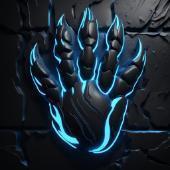
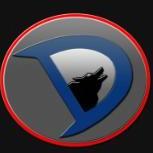


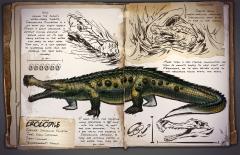
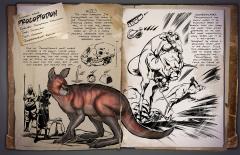
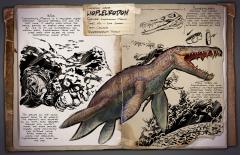

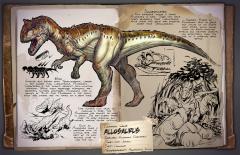
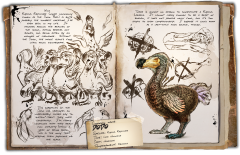
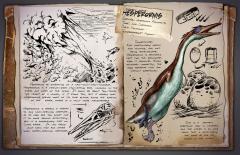
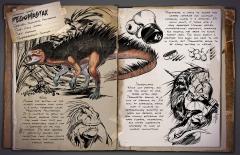
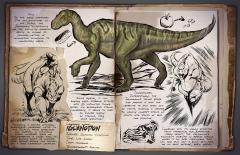
.jpg.1eabdd64041d4ef8d0c297e99347f425.jpg)
